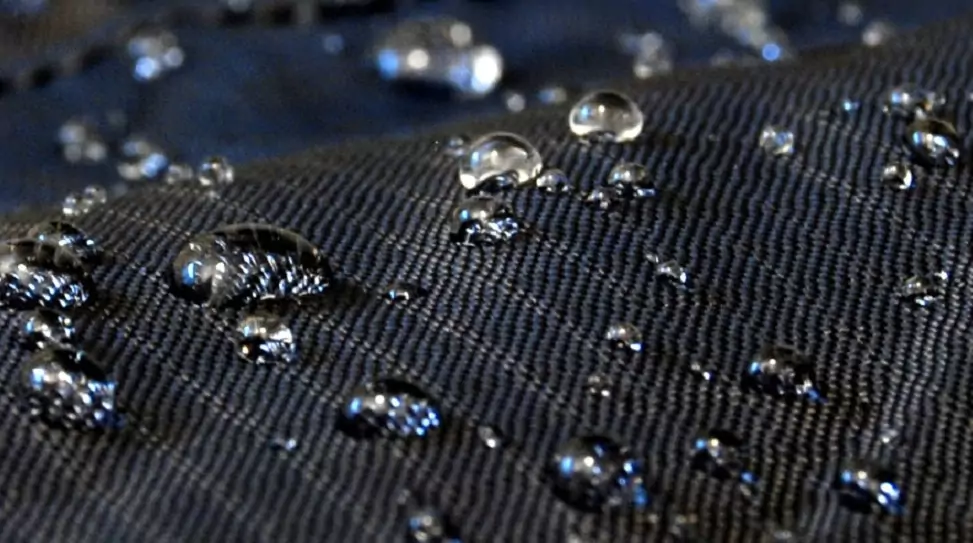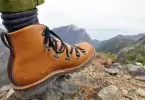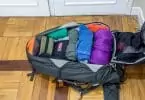You have planned everything up to the last detail, and in your quest for buying the right items for your upcoming trip, you are faced with some major decisions – often, telling the difference between water resistant vs waterproof items might seem impossible. If you’ve caught yourself standing and trying to read labels in vain, you’re not alone!
When you choose one type of equipment or another, you are virtually choosing your most trustworthy companion for your planned trip. Knowing which one is the right product for you will not only keep you dry on your trip but it’ll also save you money and allow you to enjoy your trip more.
In this article, we will review what we consider to be the most important aspects and features you should consider before buying a certain model that will offer you protection from water. We will provide all the information and we will let you be the one that makes the right choice for your specific needs.
Role of the Equipment
The first question we will need to answer is: why do you need equipment specially designed for mountain trails? The right equipment may matter more than what you think – that’s what will help you keep warm and dry on up on the trail.
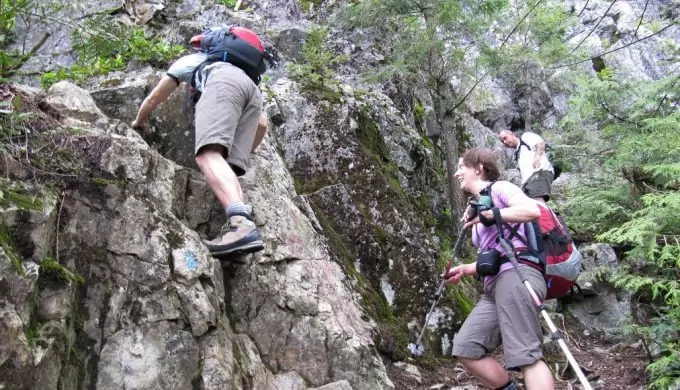
Beyond the practical aspect, the clothes communicate something about us, about the group. It is understandable if you want your equipment to be part of the “mountaineers gang”, but can you see yourself climbing dangerous routes in sneakers and short sleeves? Apart from that, here are a few things to keep in mind before going shopping.
Advice For Beginners
When a beginner buys his first piece of equipment, he generally thinks that he can conquer the world in the next weeks: summer, winter, rock, rope.
As a beginner, you will first approach more easy paths, and gradually increase the duration and difficulty of the trails. At the same time, you still do not know what your real needs are on your route, what you like, what your body needs.

The most important aspect for a beginner is to focus on general pieces of equipment, and not some dedicated for certain conditions and sectors. The best example we can give is the jacket. Three season, summer, winter, track, trekking, flexible. There are a variety of jacket designs to deal with a rout and you may lose yourself among the racks.
Functionality and Budget
The equipment fulfills two functions: comfort and protection. Once you understand these two concepts and go with them, any other factors such as the novelty of the coat, color or cool accessories go into second place.
Another important is the budget, make the most out of it! We are not telling you to spare quality, but buying a jacket that is suited for more than one season and is also comfortable will accommodate you with the feeling and you will discover what you need from the next jacket you will buy!
Buying Equipment and Reading The Label
The first thing we urge you to do when buying a new piece for your mountain equipment is checking the label. The label of a piece of clothing is like an open book, waiting to be read and understood.
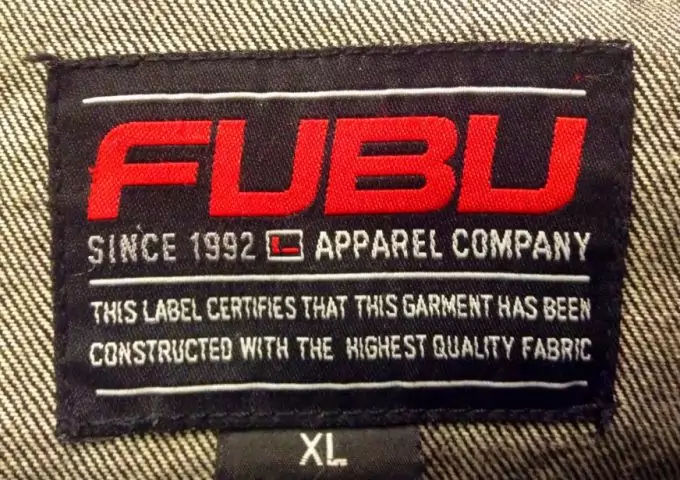
Among the most common characteristics that are found on the labels of clothing are: waterproof and water resistant, but what do these two mean?
Waterproof Labelling
Mountain equipment that is labelled as waterproof are made of materials that, whether it is naturally, or after a certain treatment, stop the water from getting through the material or from getting out of it.
In the production of some of the materials, a membrane is used that does not allow water to penetrate, but allows heat and moist to be eliminated from the inside out. Waterproof materials help with the elimination of the surplus of heat generated after effort.
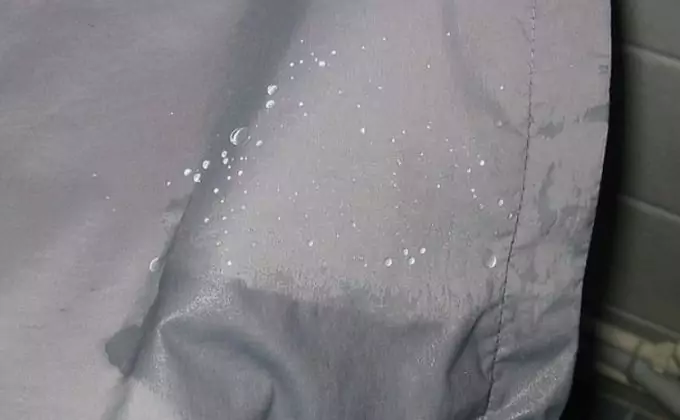
Manufacters describe impermeability using two indexes.
First Index
The first index is measured in mm and indicates the impermeability of a material. An article has an impermeability of 10.000 mm when a 2.54 cm (1 inch) tube is placed over a material and filled with water, up to a height of 10 m (10.000 mm) without water draining through a material.
The more the material resists the pressure of a larger water column, the more impermeable it is. Here are some values to help you decide better:
- 0 – 5.000 mm – Resistance 0 or low resistance; Light rain, dry snow
- 000 – 10.000 mm – Minimum resistance; Light rain, medium snow
- 000 – 15.000 mm – Good resistance; Moderate precipitation, medium snow
- 000 – 20.000 mm – Very good resistance; High rainfall, wet snow
- Over 20.000 mm – Maximum resistance; High rainfall; wet snow
Second Index
The second index measures respiration of the material and represents the amount of vaporized water, measured in grams, which can pass through a m ^ 2 piece of material, from the inside outward, within a 24 hour period.
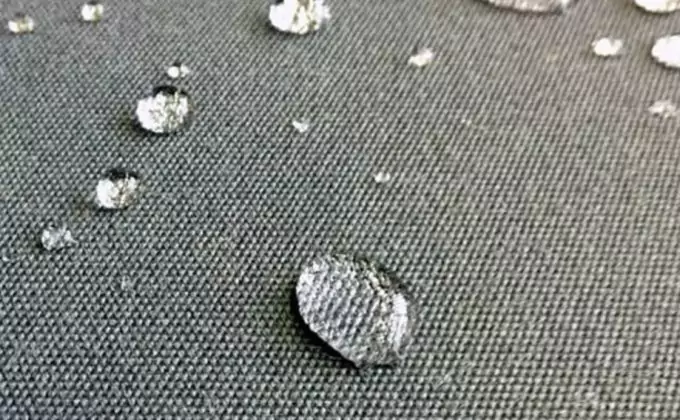
When a material has an index of 20.000 g, it is able to allow the passage of 20.000 g of water vapor through a m^2 fabric.
Types Of Membranes Used By Manufacters
Here are some membrane types that manufacturers most often use.
Gore – Tex
The Gore-Tex Is a 9 million – micron microporous membrane, chemically inert, thermally stable and wondrous once it is specially laminated. Microscopic pores are 20.000 times smaller than rain drops, so water can not pass through the membrane.
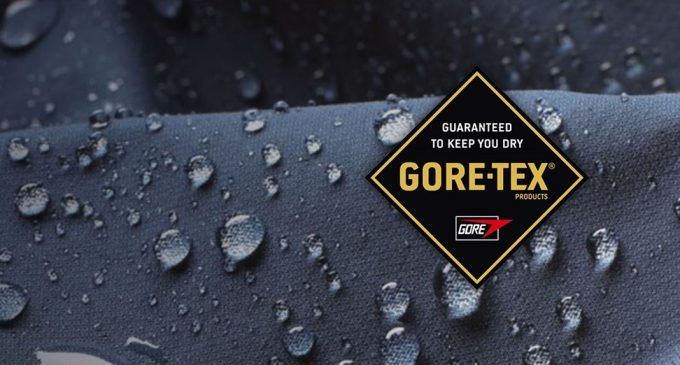
At the same time, they are 700 times larger than water vapor, allowing them to pass outwards. The Gore – Tex standard resists 28.000mm / 15.000 respiration, and the breathable version up to 25.000.
eVent
The eVent ss a very breathable air – permeable/ direct – venting membrane. The pores of the membrane are open all the time allowing moisture vapors to pass through it, thus eliminating the transition to the solid phase as in gore-tex.
The advantages translate directly into the fact that you can use a jacket with eVent and at slightly higher temperatures as well. eVent is available in three versions: DVexpedition (30.000 / 10.000 breathability), DValpine (20.000 mm / 20.000 breathability) and DVstorm (10.000 mm / 30.000 respiration)
Polartec Neoshell
The Polartec Neoshell is a new type of hydrophilic (water repellent) polyurethane (PU) membrane with carefully calculated and various micropores. The advantage of this mbembrane is its construction that lowers the pressure between you and the membrane, allowing sweat vaport to flow freely outward.
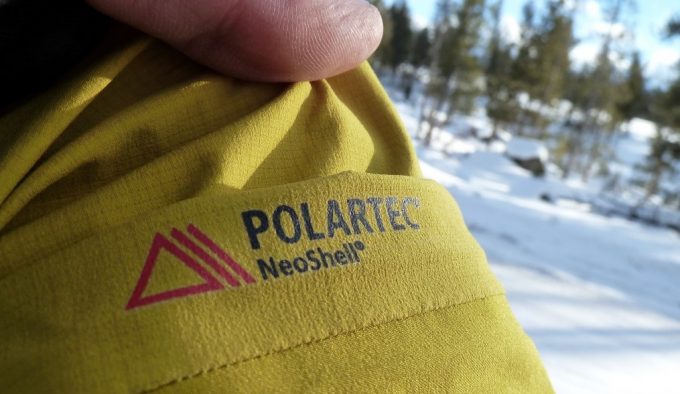
We know it sounds like a merketing flaw, but this technology is patented. Brands working with Polartec NeoShell: Rab, Millet, Giro.
Sympatex
The sympatex is a polyurethane (PU) membrane made up of polyether (hydrophilic) polyester (Hydrophobic) copolymer blocks that have no pre and has a strong chemistry. The principle of operation is different from the above: hydrophilic molecules absorb water by increasing volume, leaving space for sweat vapors to pass outwardly to hydrophobic molecules.
This creates an absorption – diffusion mechanism – “squeeze”. Without pores, it is completely waterproof and it can withstand up to 45.000 mm water column until the membrane disintegrates, but the course, no chance.
MemBrain
The MemBrain is a two-layer patented polyurethane laminate membrane with 10.000mm/ 10.000 breathability parameteres. MemBrain Loss is a lightweight version with 2.5 L construction with 20.000 mm / 20.000 breathability.
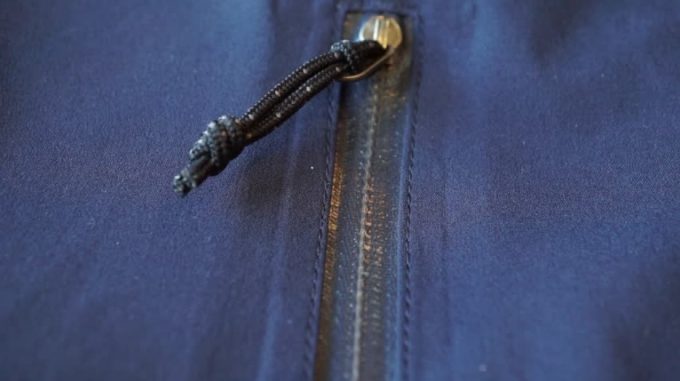
Membrain is quite fragile and does not resist abrasion and wear as well as the competitors’ variants, hence the more digestible prices. However, it might be a good choice if you’re on a budget.
H2No
The H2N0 is a standard membrane developed by Patagonia for proprietary PU membranes built with 2 L, 2.5 L and 3 L. The marketing standard at H2No is that it resists a water column of 20.000 mm when it’s new and 10.000 after its Killer Wash owener test that stimulates extreme wear.
Conduit
The Conduit is a laminated patented Mountain Hardware from PU with a similar operating principle to Sympatex, but is has a much lower respiration. On a scale from 0 (plastic bag) to 10 (in bare skin), where active gore-tex gets an 8, Conduit gets a 2.
Dry.Q
The Dry.Q is the top hardware from Mountain Hardware, similar to NeoShell, a porous membrane, but it does not have the PU layers as in the traditional ePTFE. It is available in three versions: Elite, Active and Core.
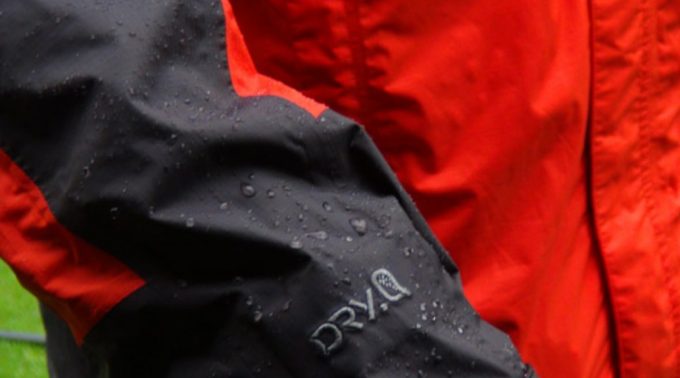
All of them feature high breathability (30.000) and robustness (can be washed up to 500 times). The disadvantages consist of the weight of the material and the fact that it is rough and not as comfortable as the alternatives on the market. MH is used for climbing equipment.
Softshell – Water-Resistant Labelling
Softshell is a type of technical material that might make you happy because it’s water-resistant but breathable at the same time. It was invented to fill the gap between the fleece, the soft and warm polar material and the hardshell which is completely waterproof, but unpleasant to the touch.
A softshell jacket – or any other water resistant piece – should always be useful to you, regardless of the physical outdoor activity you prefer. Offering great freedom of movement, moderate protection against wind and rain, warmth and breathability, it might soon become the most used jacket in your wardrobe.
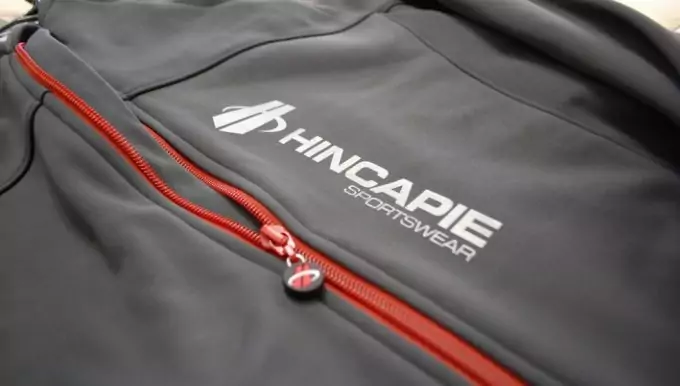
Apart from that, a good softshell jacket is an excellent coat for intense aerobic activities carried out at low temperatures, with moderate wind and rain. Virtually, such a piece will allow you to enjoy the activity of your choosing, even when you sweat and need a great freedom of movement.
Why Pick a Softshell?
Softshell appeared as a material in the year 2000, long after the invention of fleece and the technologies used in hardshells. As we mentioned, it has emerged to fill the gap between the two.
Until the invetion of the sofshell, you had to choose between the warmth and breathability of the fleece but the lack of protection against the elements, and the almost total protection against them but a very low respiration, which translated into condensation and moisture.
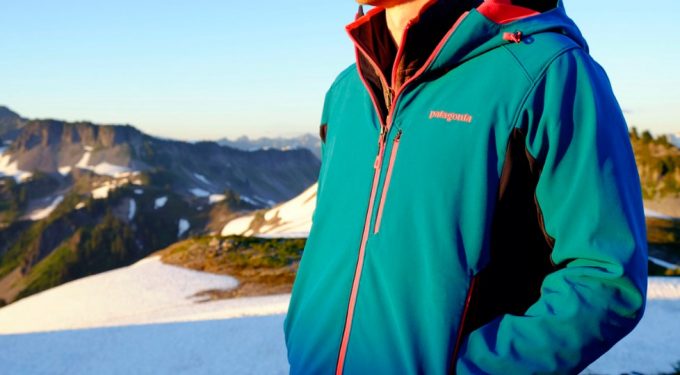
Image Credit: switchbacktravel.com
No jacket will meet your needs no matter how much it costs and what technology is promised on the label. Each is appropiate for certain types of weather conditions and must be judged as such.
What Can Softshell Do For You?
This softshell material is pleasant to the touch and comfortable, providing protection against wind and moderate rainfall and has a good breathability. Basically, this type of material might be suitable for 80% of the weather conditions that you will encounter in your active tours.
A major advantage of the softshell jacket is the great freedom of movement. Marmot has a special name for their products: „Angel-Wing Movement”, which implies perfect mobility of the arms.
Softshells can be simple or with different weather proof membranes or rain-treated materials, but the water-resistance comes at the expense of breathability, so you will have to weigh well what properties are most important to you.
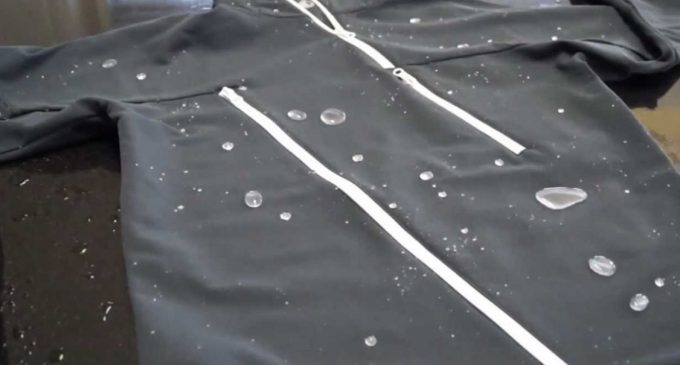
Most often, a softshell will only have a type of water-resistant material, and they are made out of polyester/ nylon/ Lycra and a synthetic fluffy layer that keeps it warm and soft to the touch, but it dries much slower.
What To Look For When Buying Water-Resistant Fabric
Here are a few things to pay attention to when buying your next jacket or any other piece of water-resistant equipment.
Fabric
As in the case of fleece, there are several softshell variants, from thin and elastic, to more robust variants with dense fleece inside especially designed for cold weather. Softshell is a type of woven material made out of polyester or nylon, is elasic, rain and wind resistant (moderate) and may or may not have fleece inner face.
There is no better or worse version here than as long as the clothing item suits your needs. For example, a soft and elastic softshell will be ideal for cycling, climbing, running on a relatively nice weather.
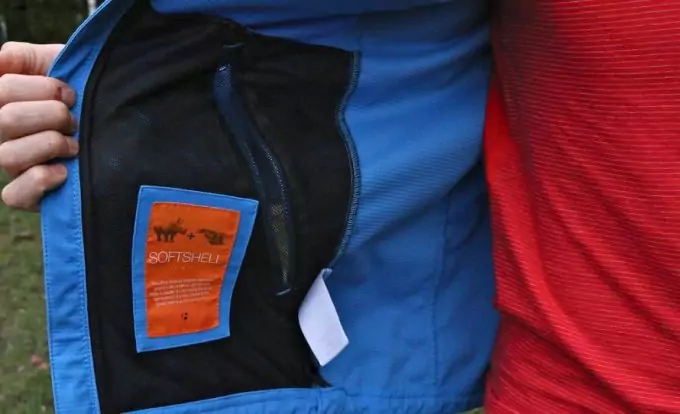
For heavier weather conditions which include many cold stops, there are fleece variants that have low respiration, but offer extra warmth.
Style and Cut
The crown of the softshell clothing item must follow the line of the body, allow movement and another thin layer of clothing. You will find written on the label things like „athletic” or „alpine cut” that translate into larger freedom of movement. Most water-resistant items are elastically fitted to the hem to tighten it on the body.
Depending on the activity that a jacket serves, it has a specific construction. For example, if you’re buying a jacket for bicycle turns, it might be be longer in the back; if you’re buying a climber’s jacket, it will be a little longer with no laces or pockets to get in the way when wearing the harness.
For skiing, the sleeves are fitted with velcro to accomodate the gloves and have pockets for the skipass. They may also have a reinforced shoulder area to withstand the eventuality of wearing a backpack.
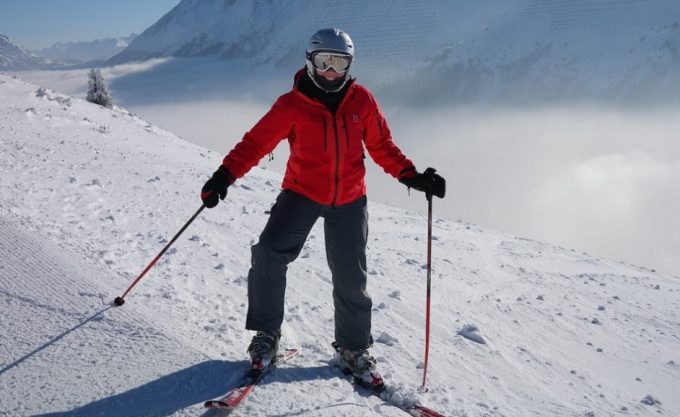
Another important element is the zipper placed in the area of the subrame that helps to ventilate in case of overheating and sweating.
Weather Resistance
An important thing we have to tell you is that there is no softshell that is completely resistant to wind and rain, but only to moderate variants. Depending on your needs and budget, you can choose between:
- Simple versions, that do not promise extraordinary technologies, but can resist in moderate rain and wind conditions.
- Treated DWR (durable water repellent) though not very durable, offers extra protection against water. This causes the drops of water to roll off the material and not impregnate it. Protection is moderate, implying rain is not heavy and is does not last long.
- With membrane, which is much more expensive than the others, these softshells have a laminated waterproof membrane (Polartec Power Shield Pro, Gore-Tex etc) between the exterior of the nylon or the polyester and the fleece interior. Although much more resistant to wind and rain, they do not have good breathability and are not preferred under intense activity.
- Hybrid variants, which make you think they’re a bit cheaper, they are not. These softshells have more exposed parts (shoulders, arms) of more durable material and the rest in a thinner and breathable version.
Ready to Climb to the Top?
Whether you have been battling the mountains for years or you are new to this, we hope the terminology used in this article will be of use. By knowing the difference between waterproof and water-resistant, we hope, that some day, you will think of this article and the things you have learned from it.

Hiking, climbing or any other sort of activity that takes place in the mountains is not a child’s thing. At stake is your very own health and only by being well informed will you ensure that you are protected at all times!
If your opinion is alligned with ours, or even different, we encourage you to leave a comment in the designated section. We value our readers’ opinions and value them a great deal!

